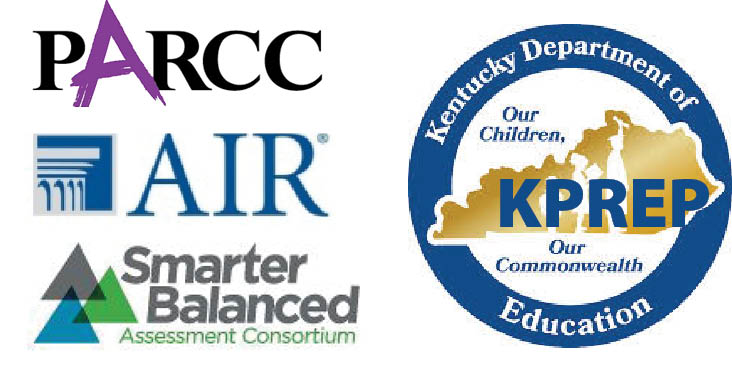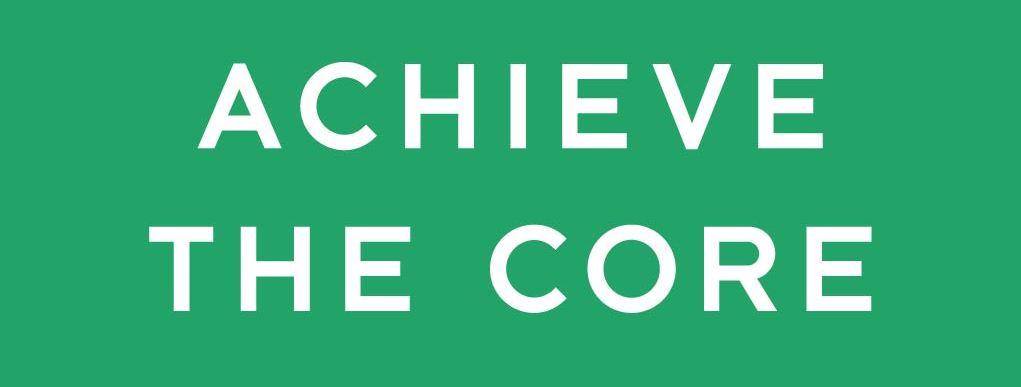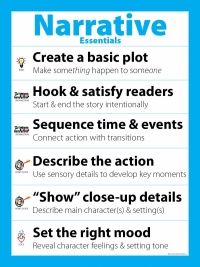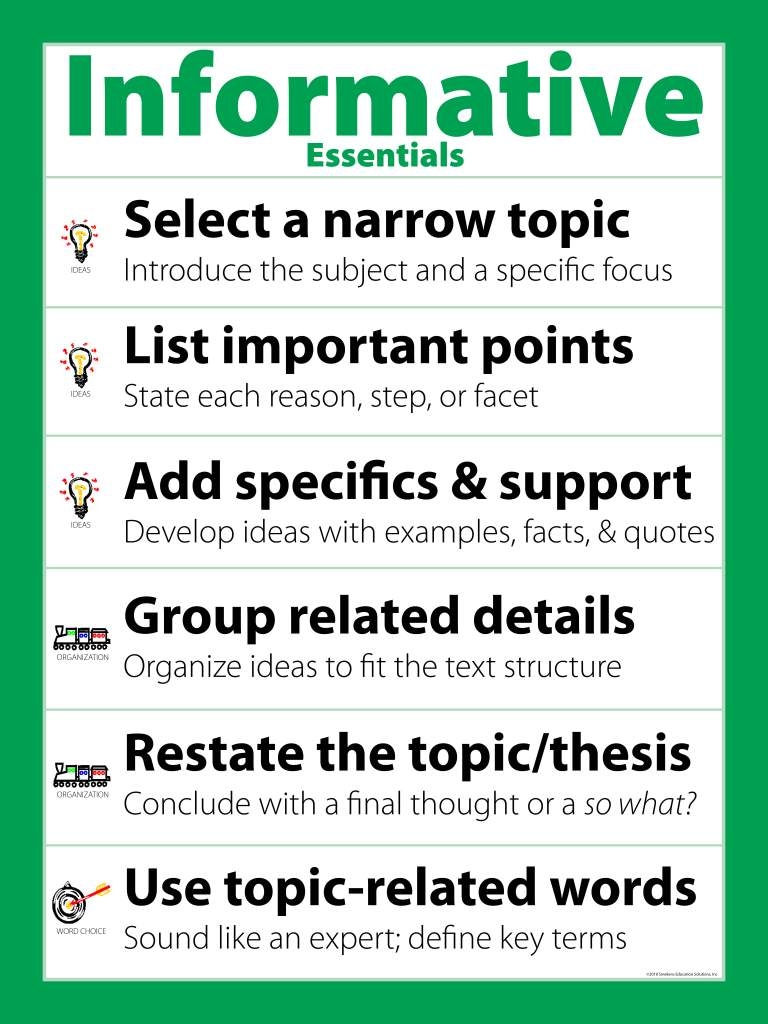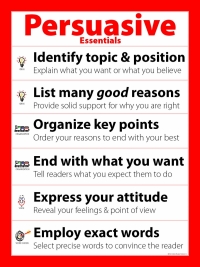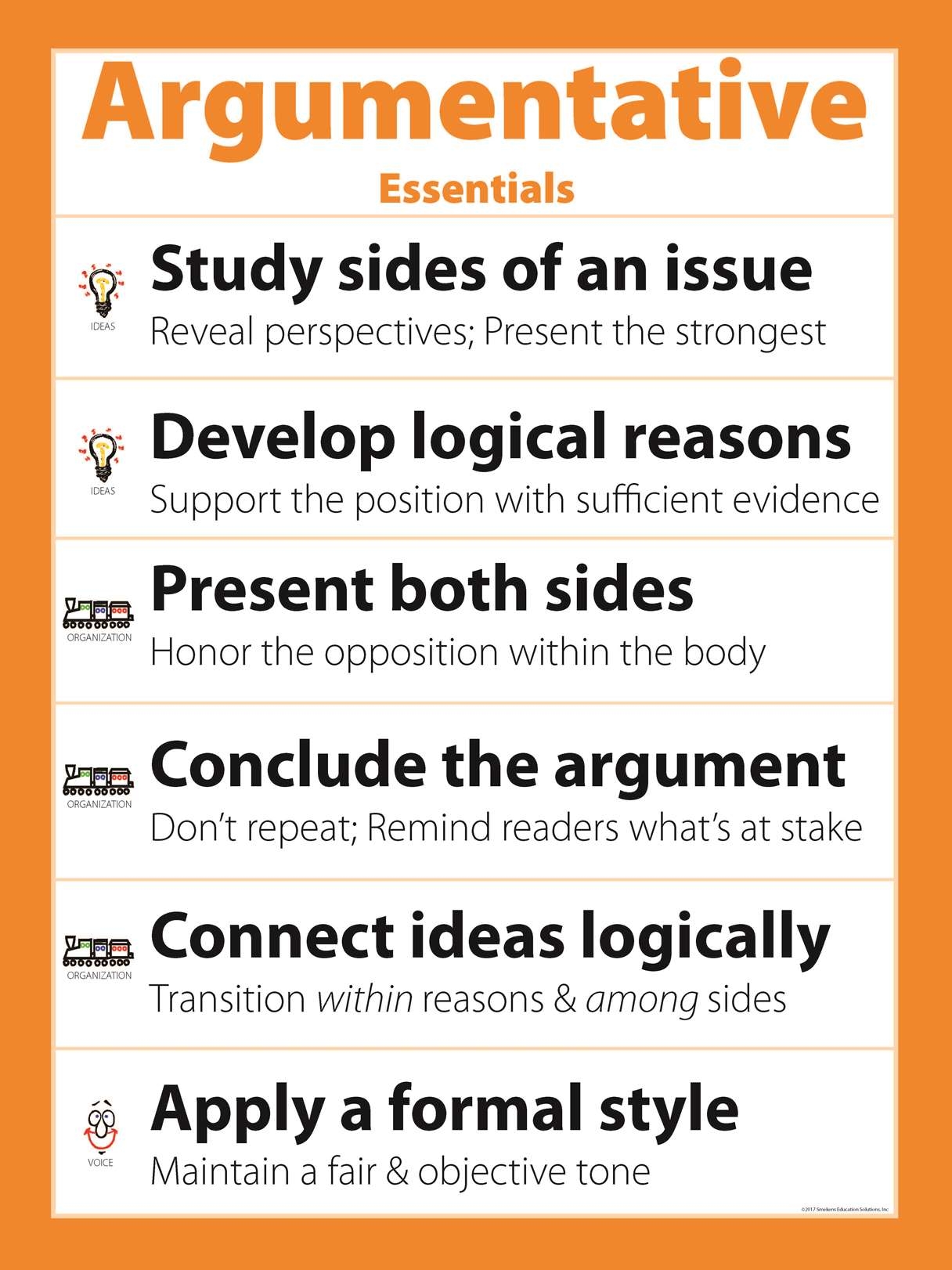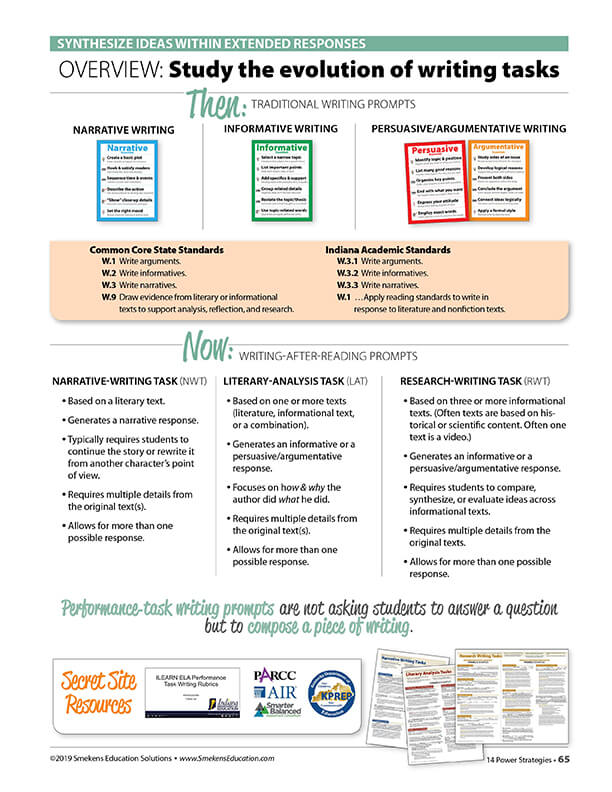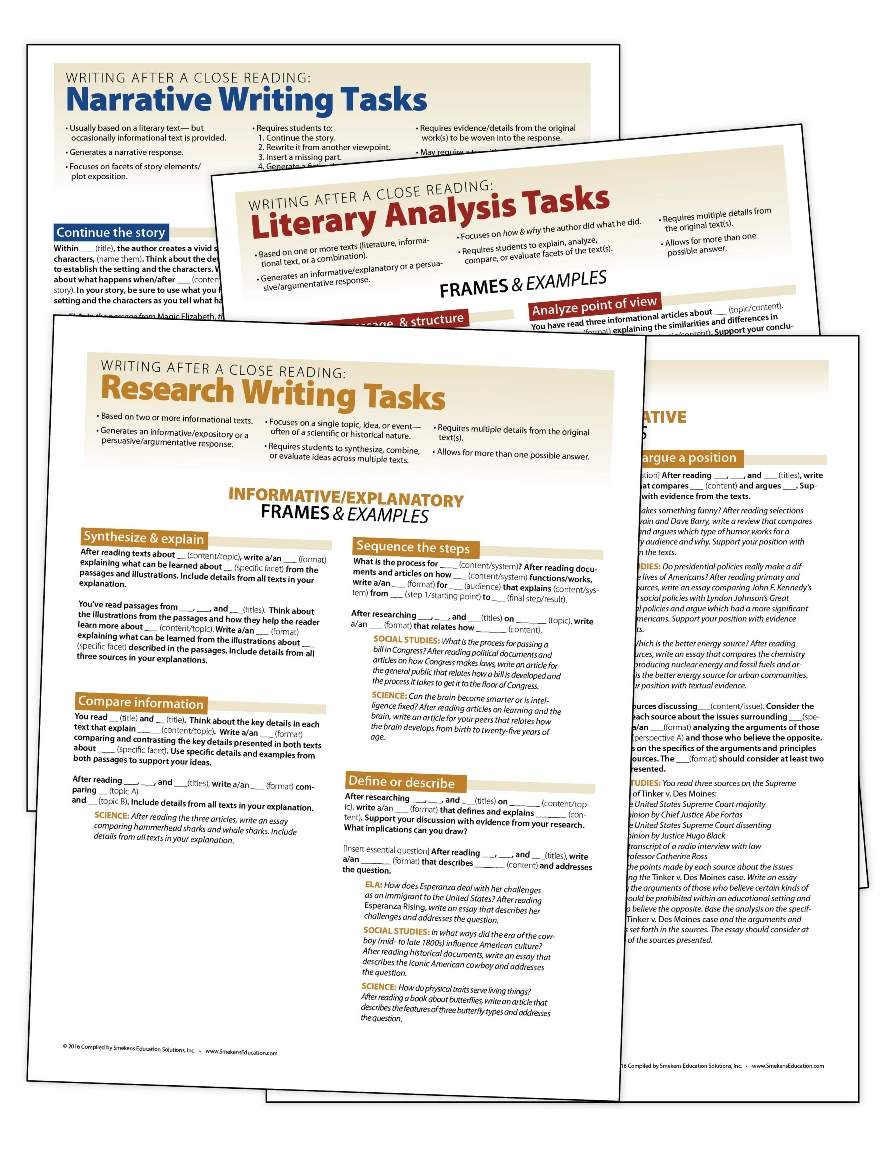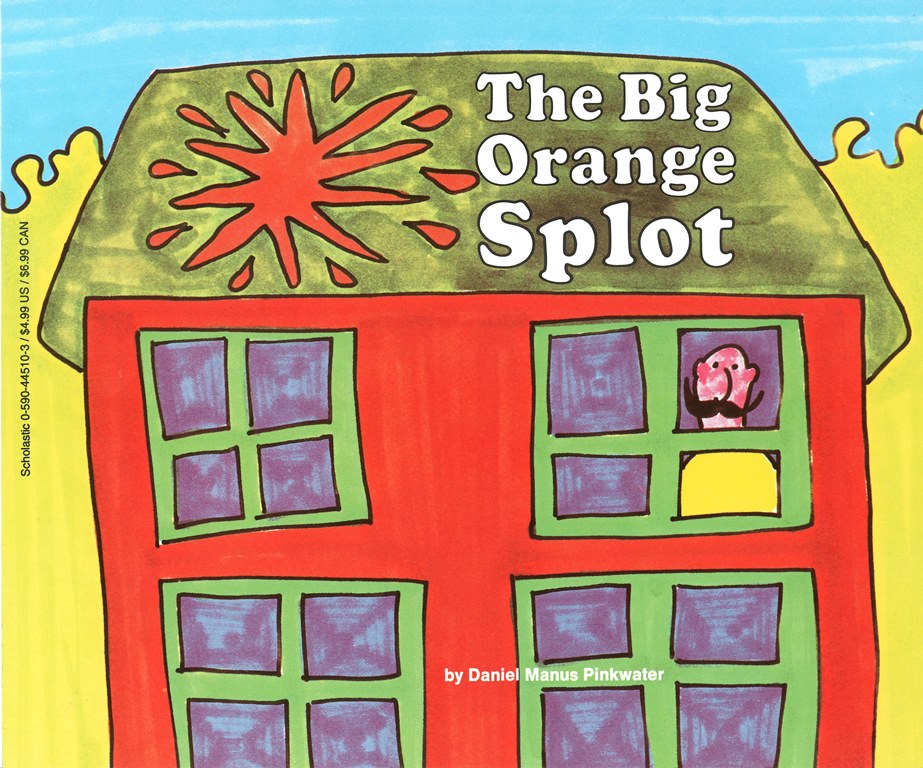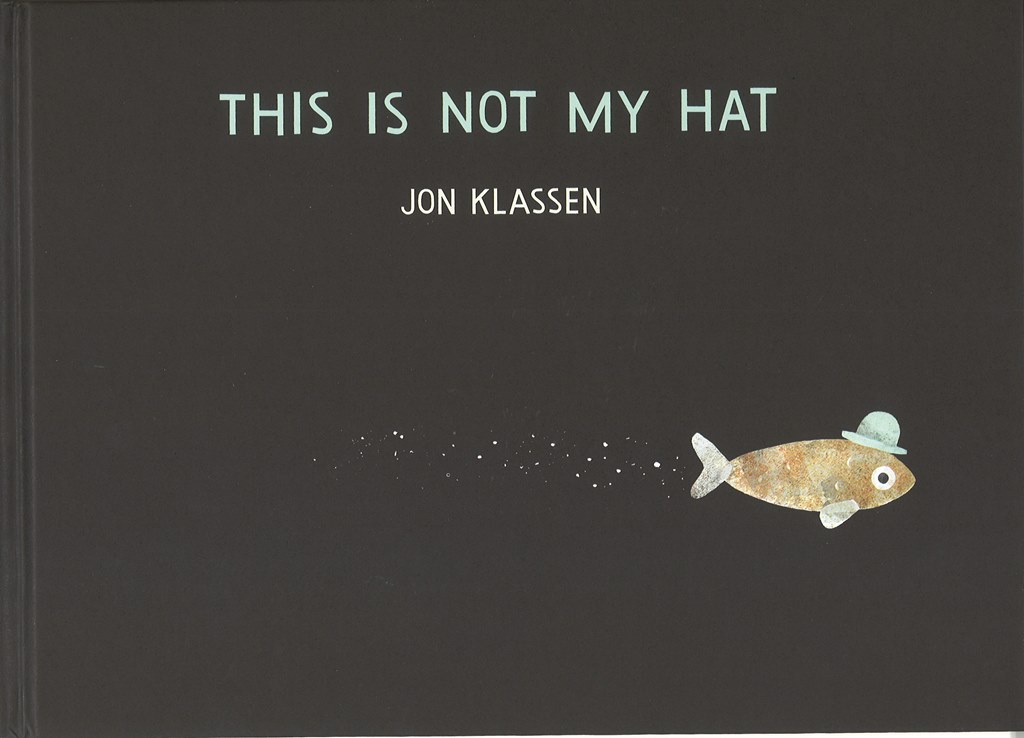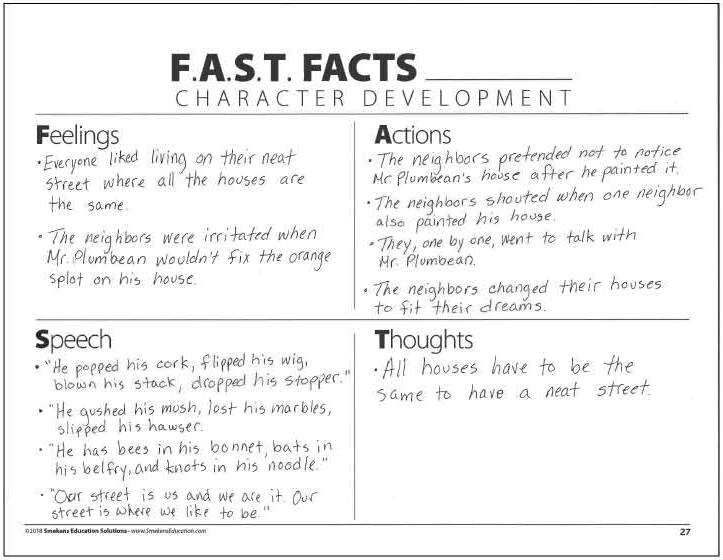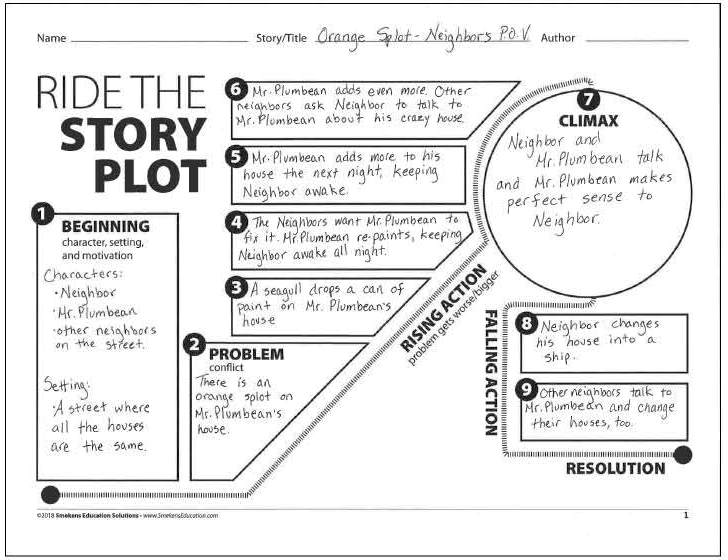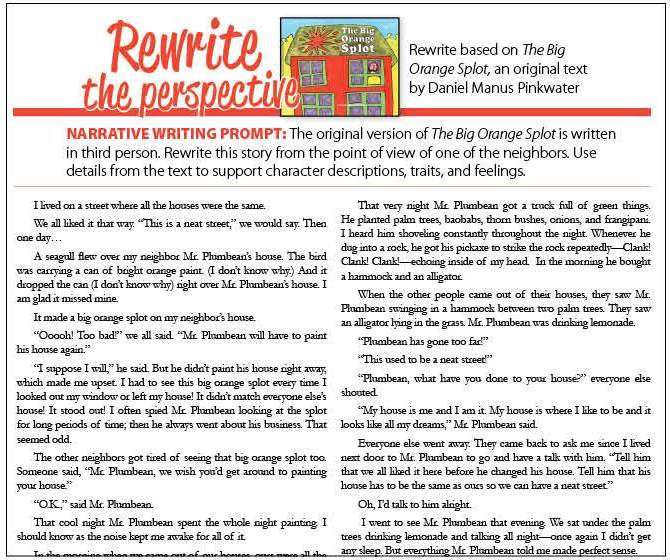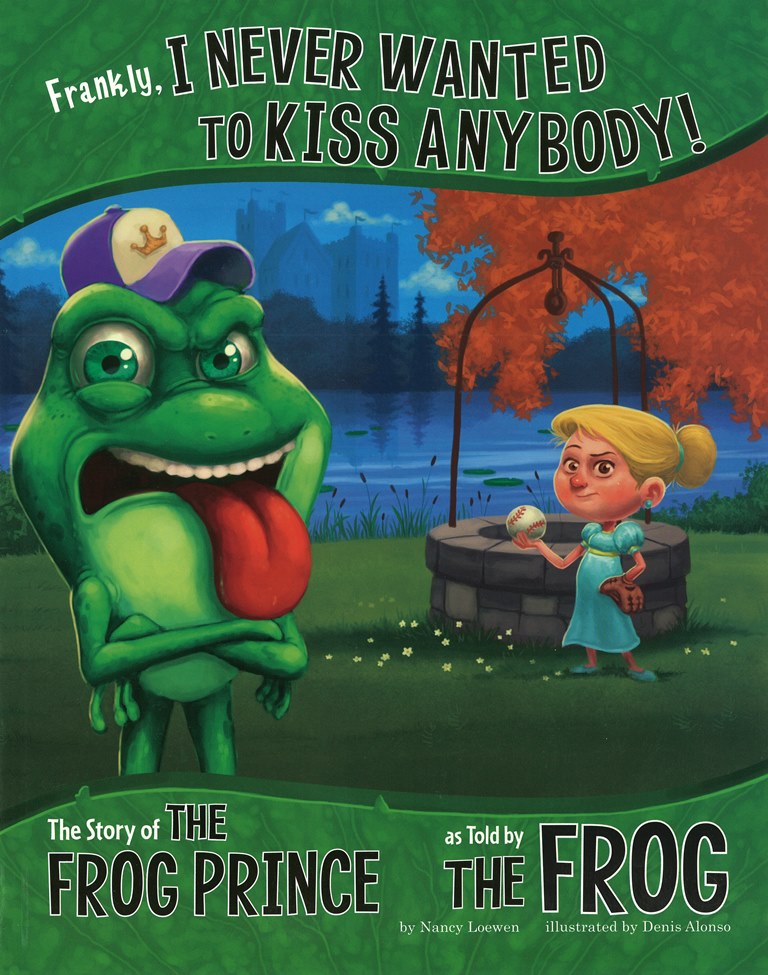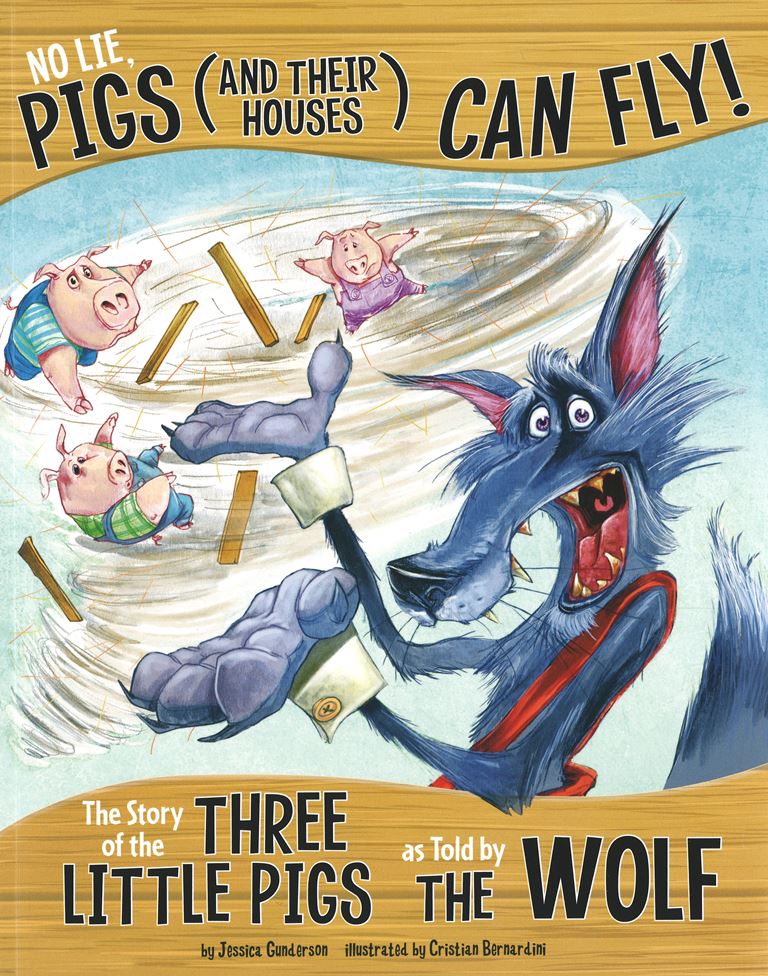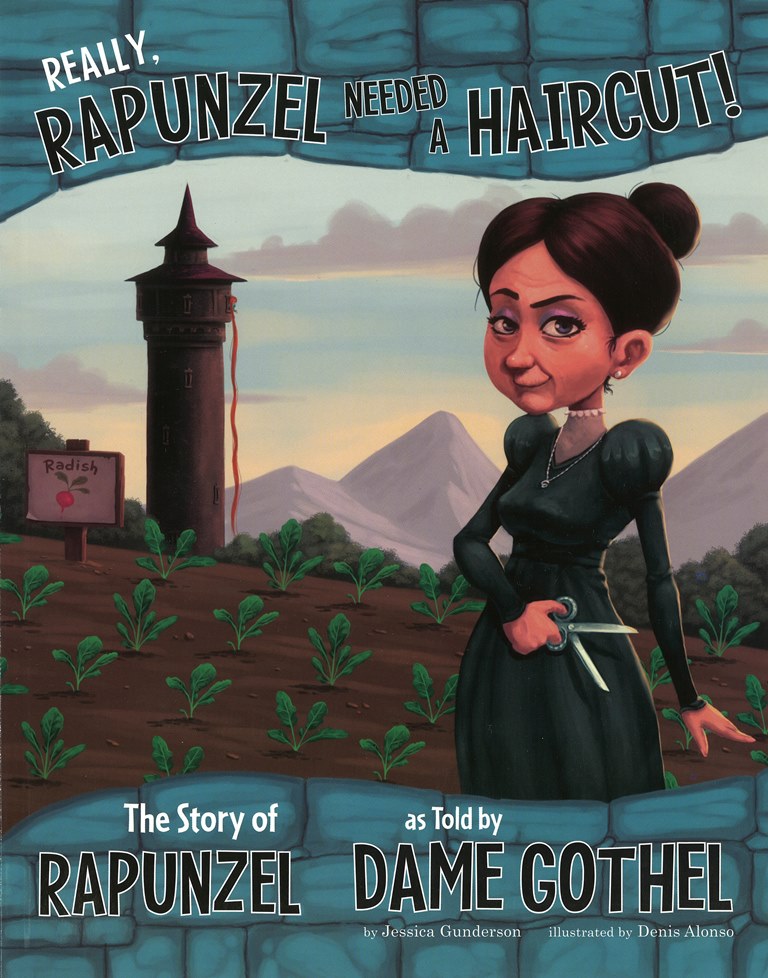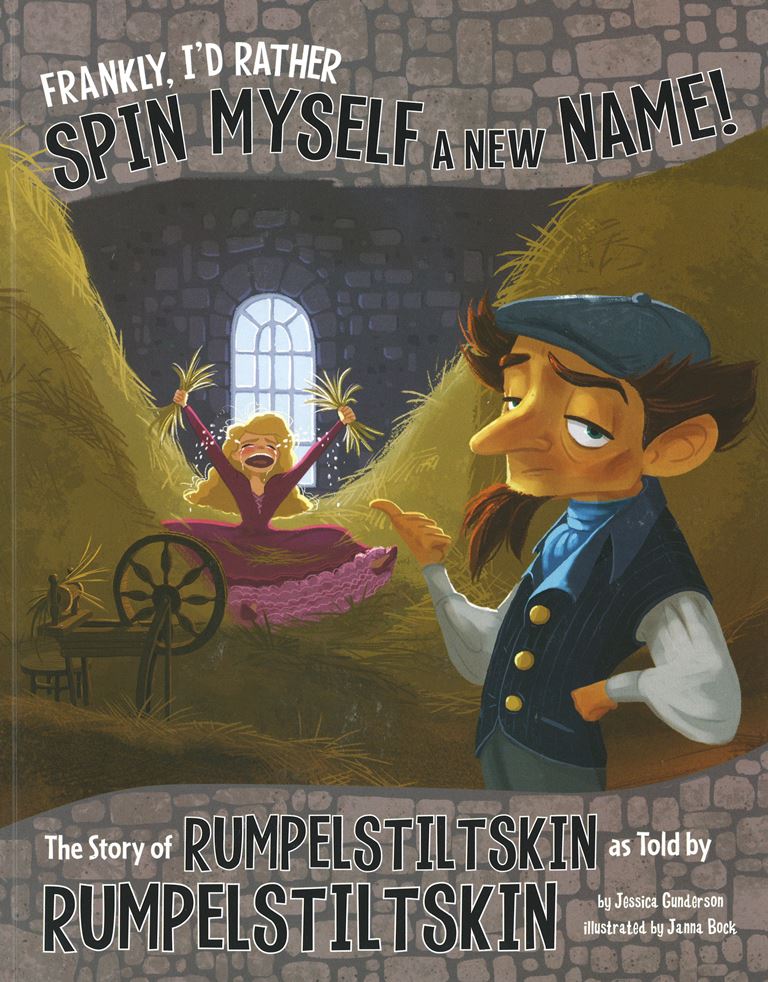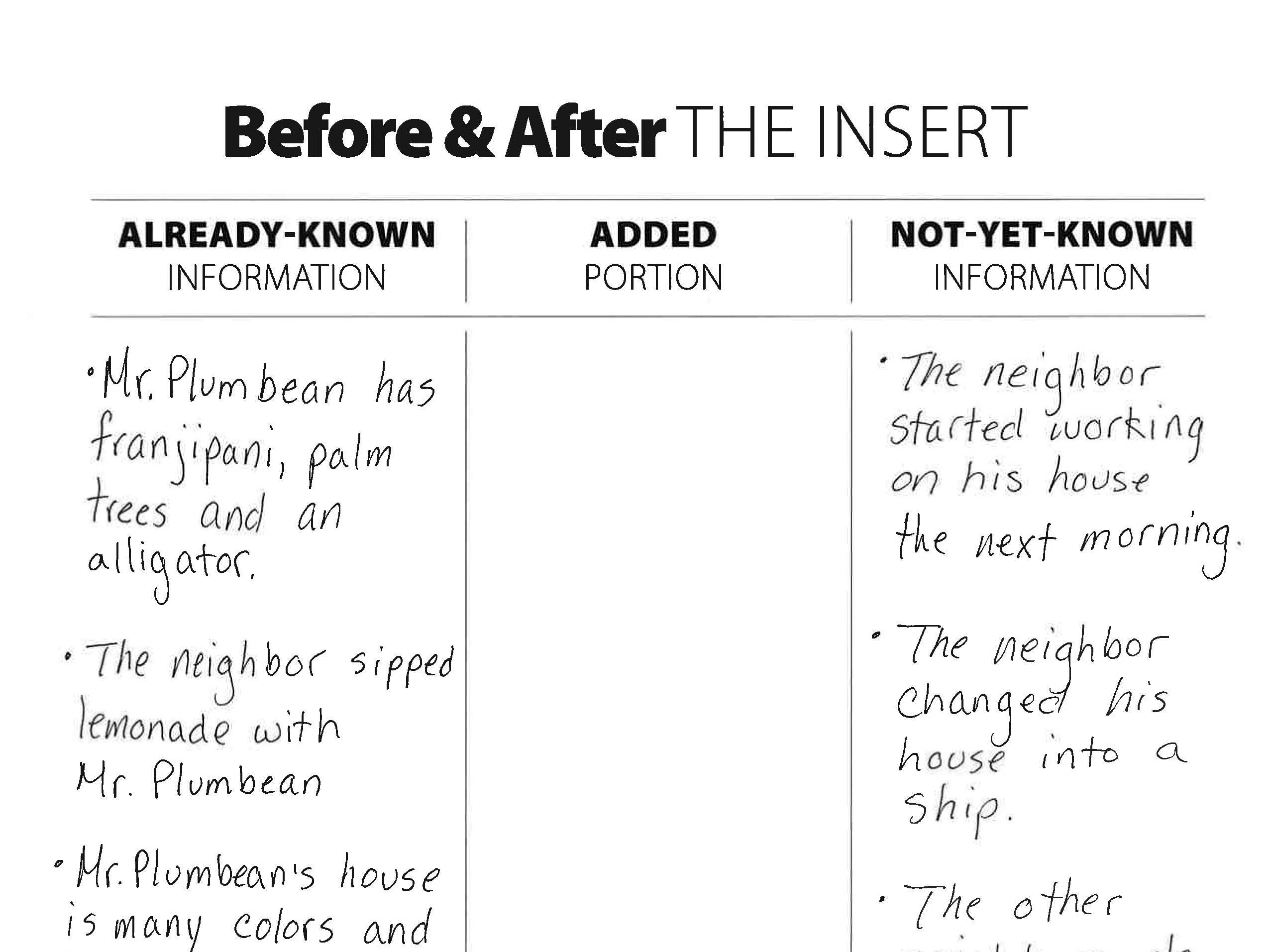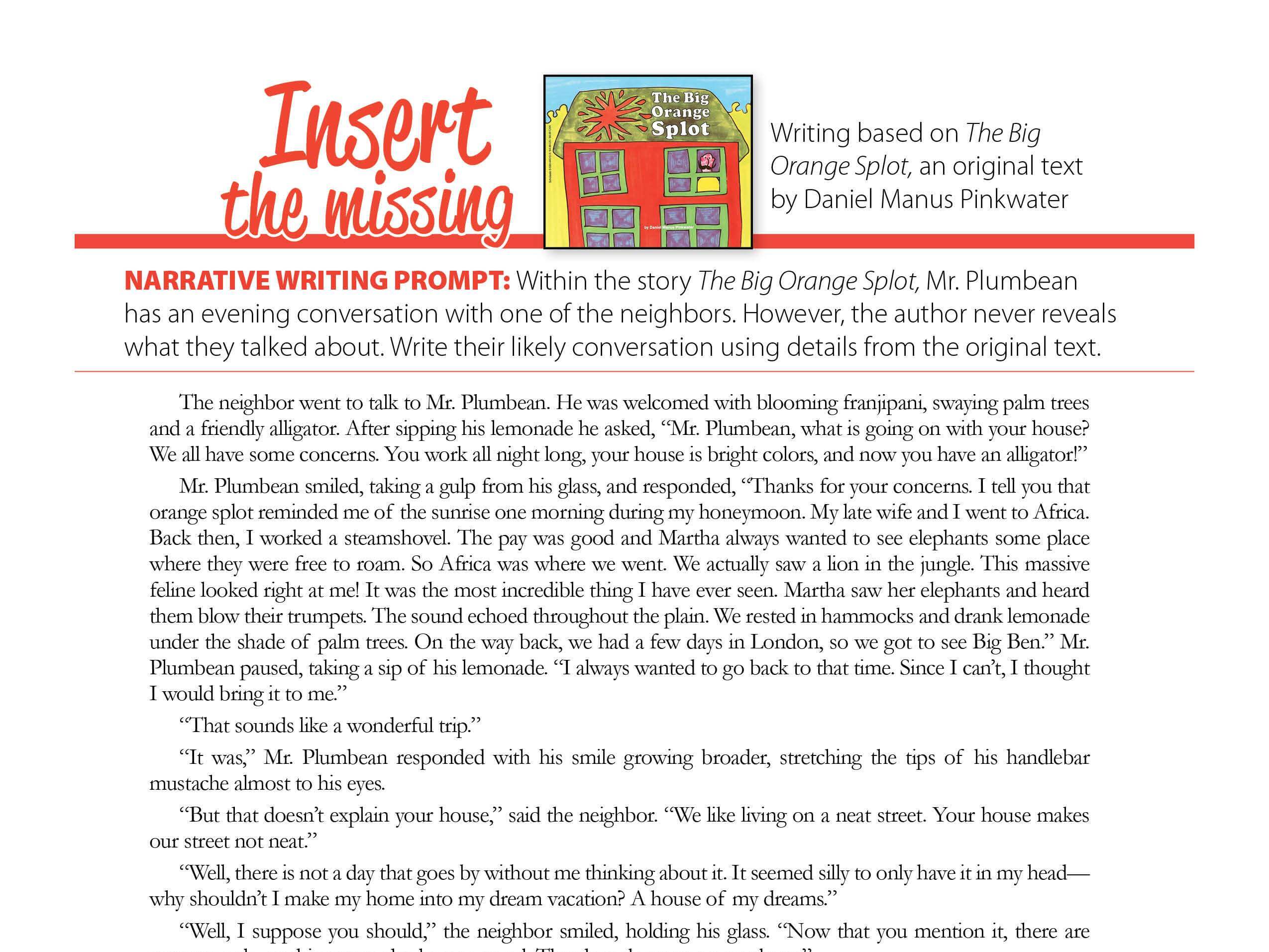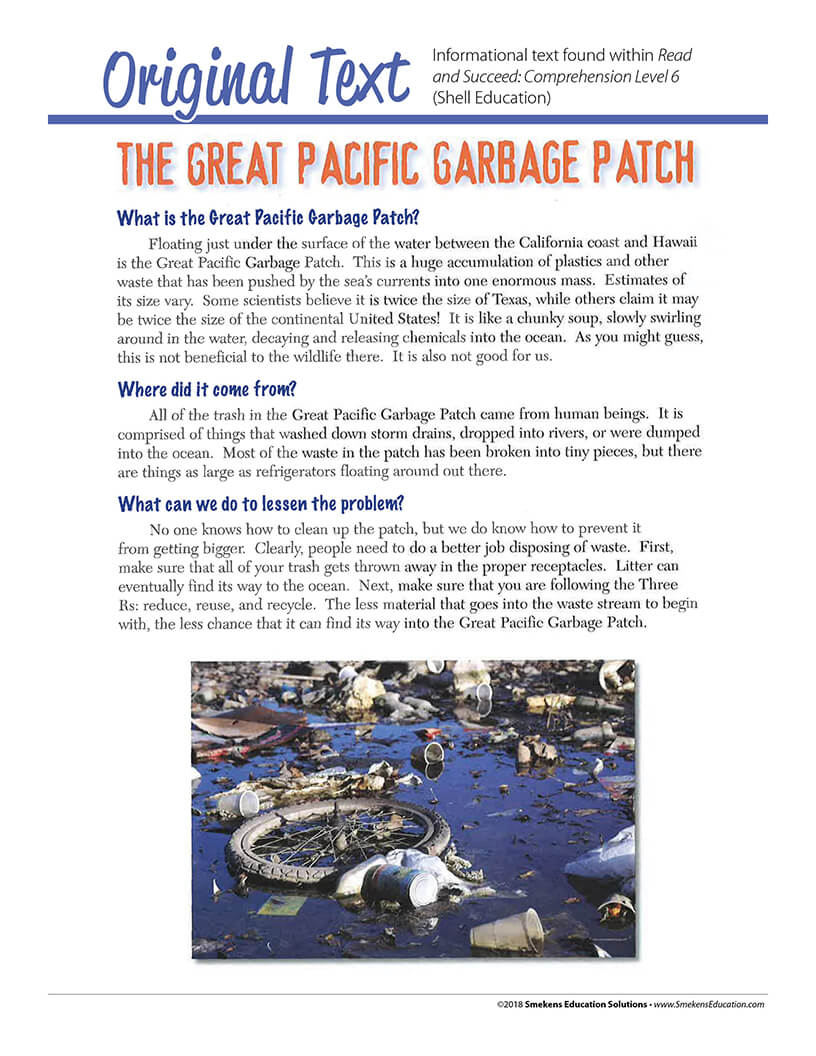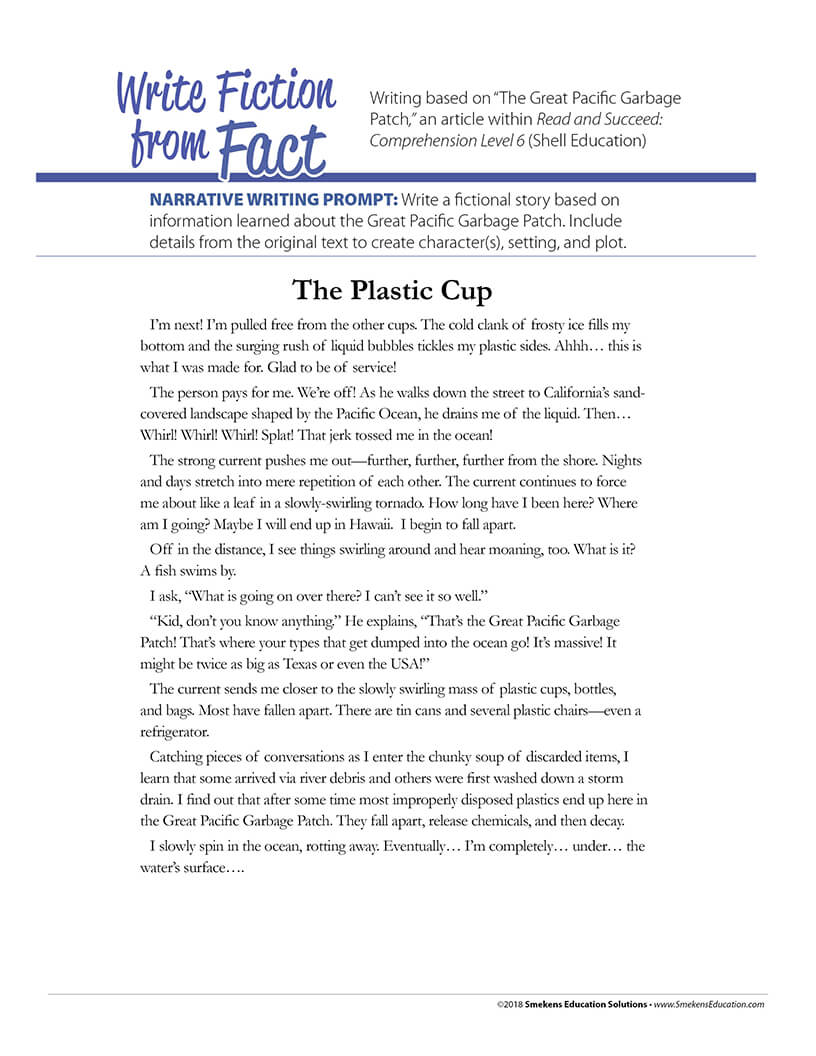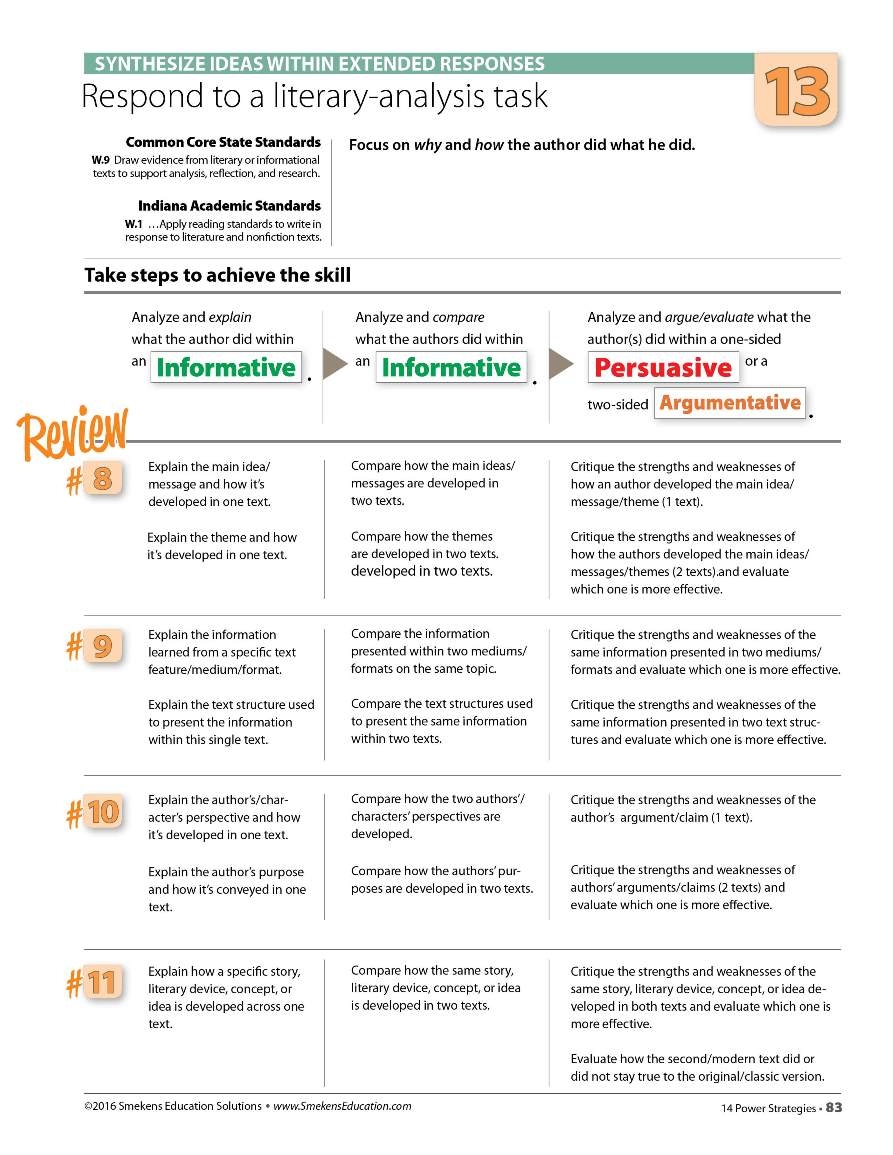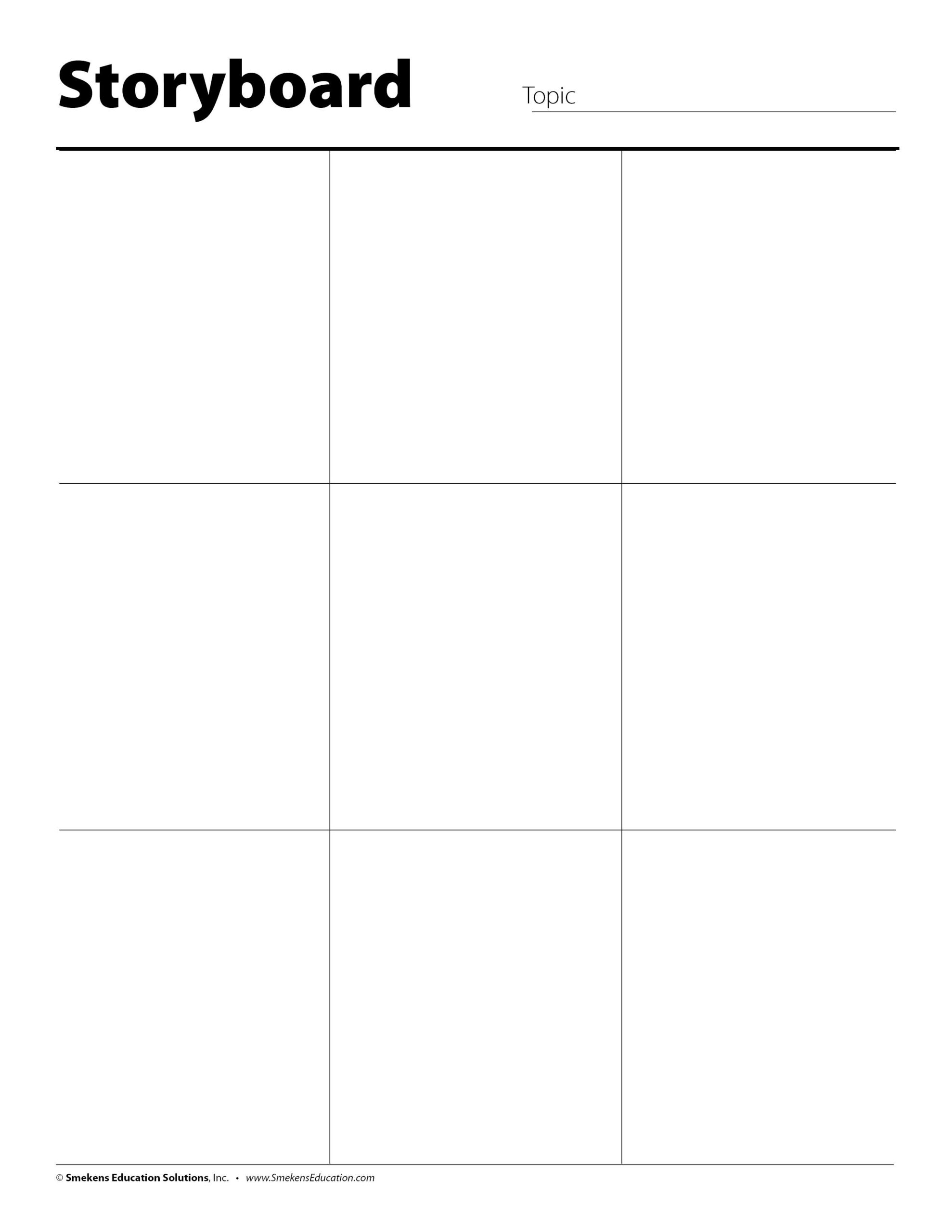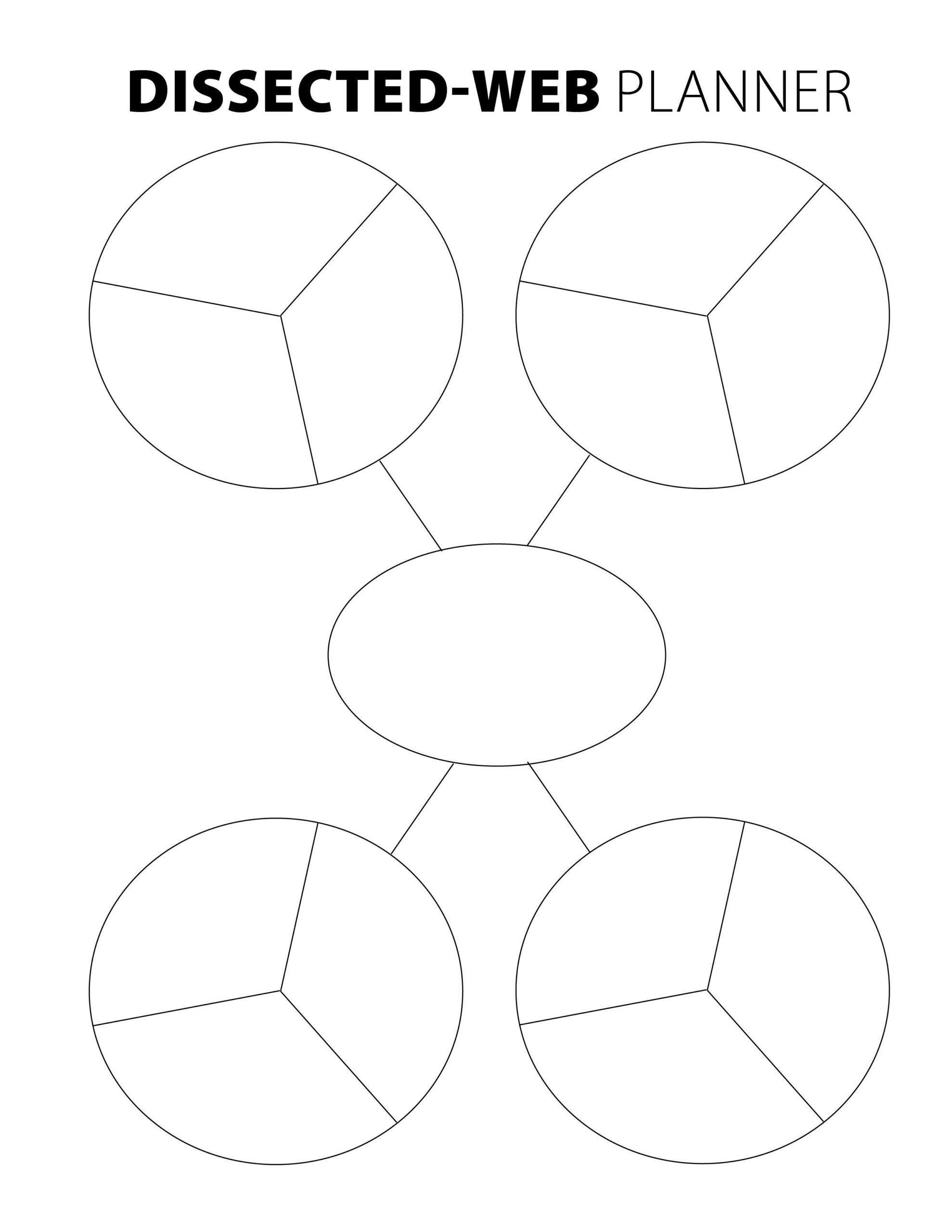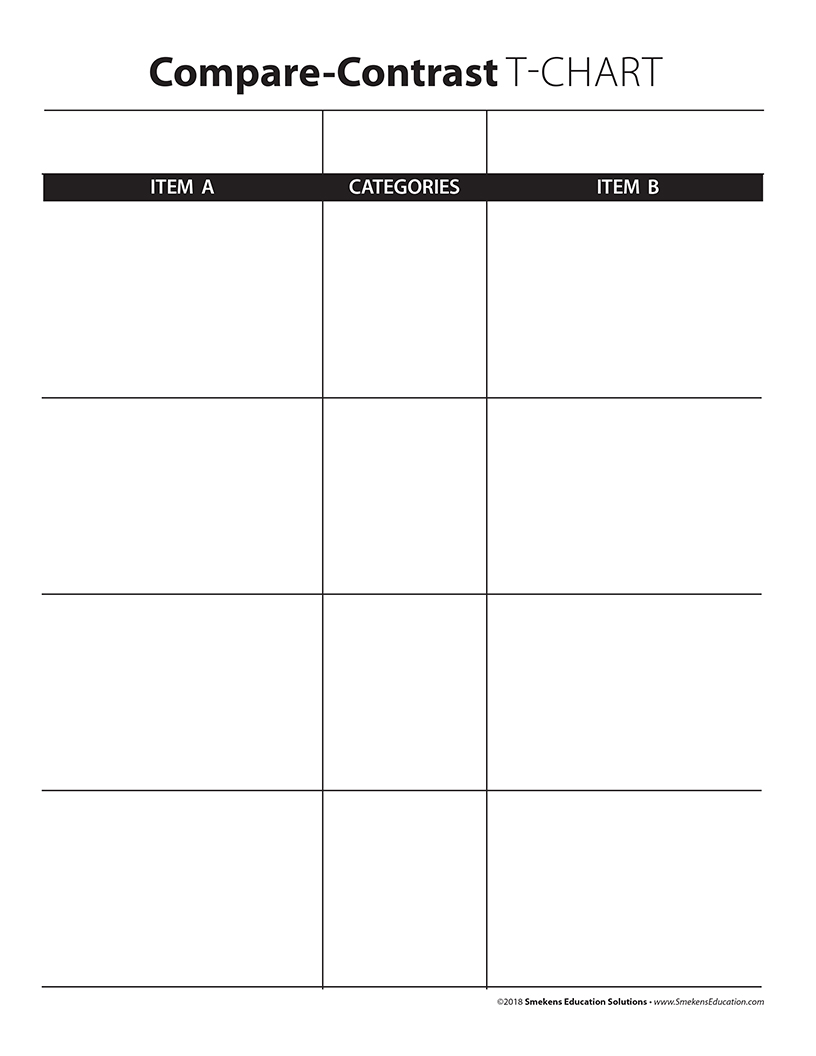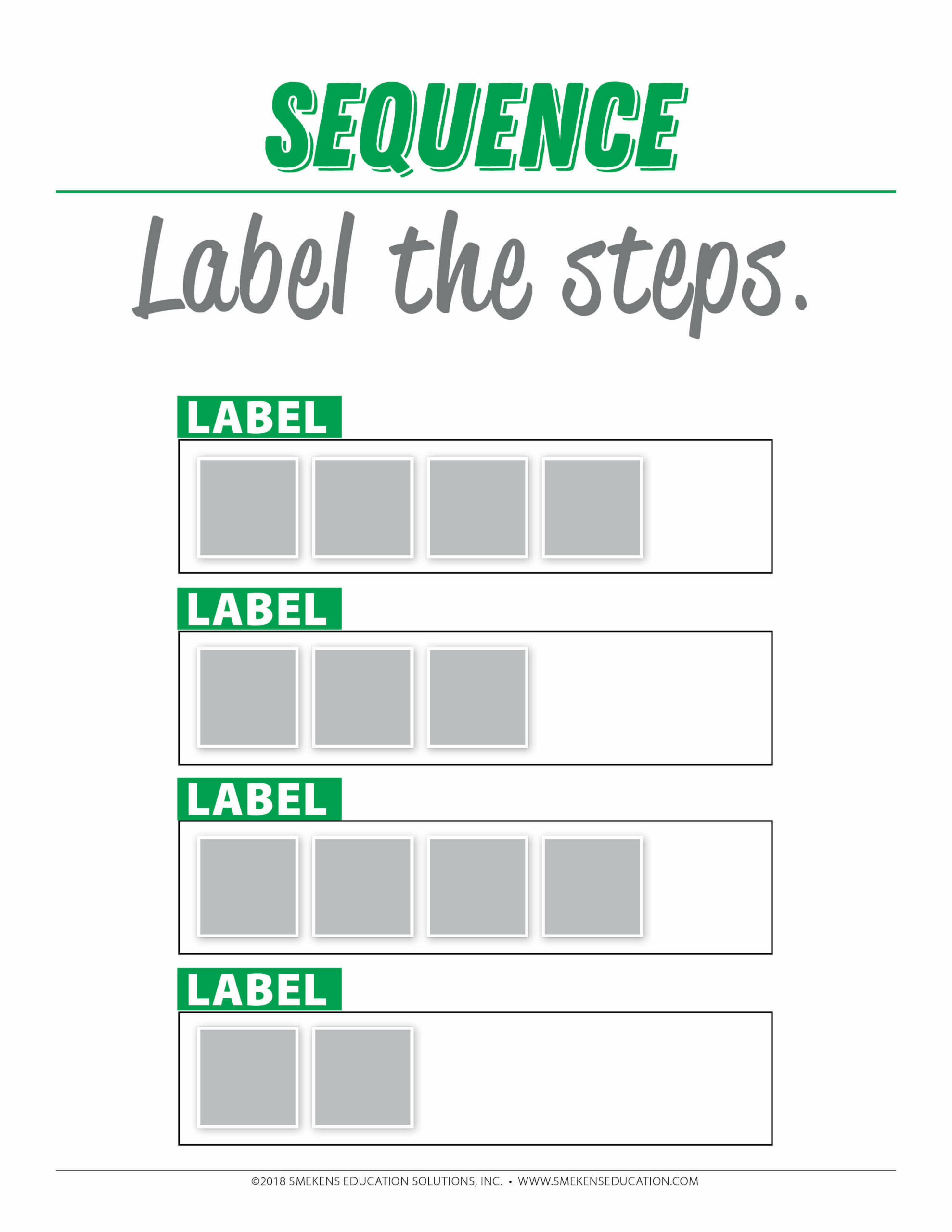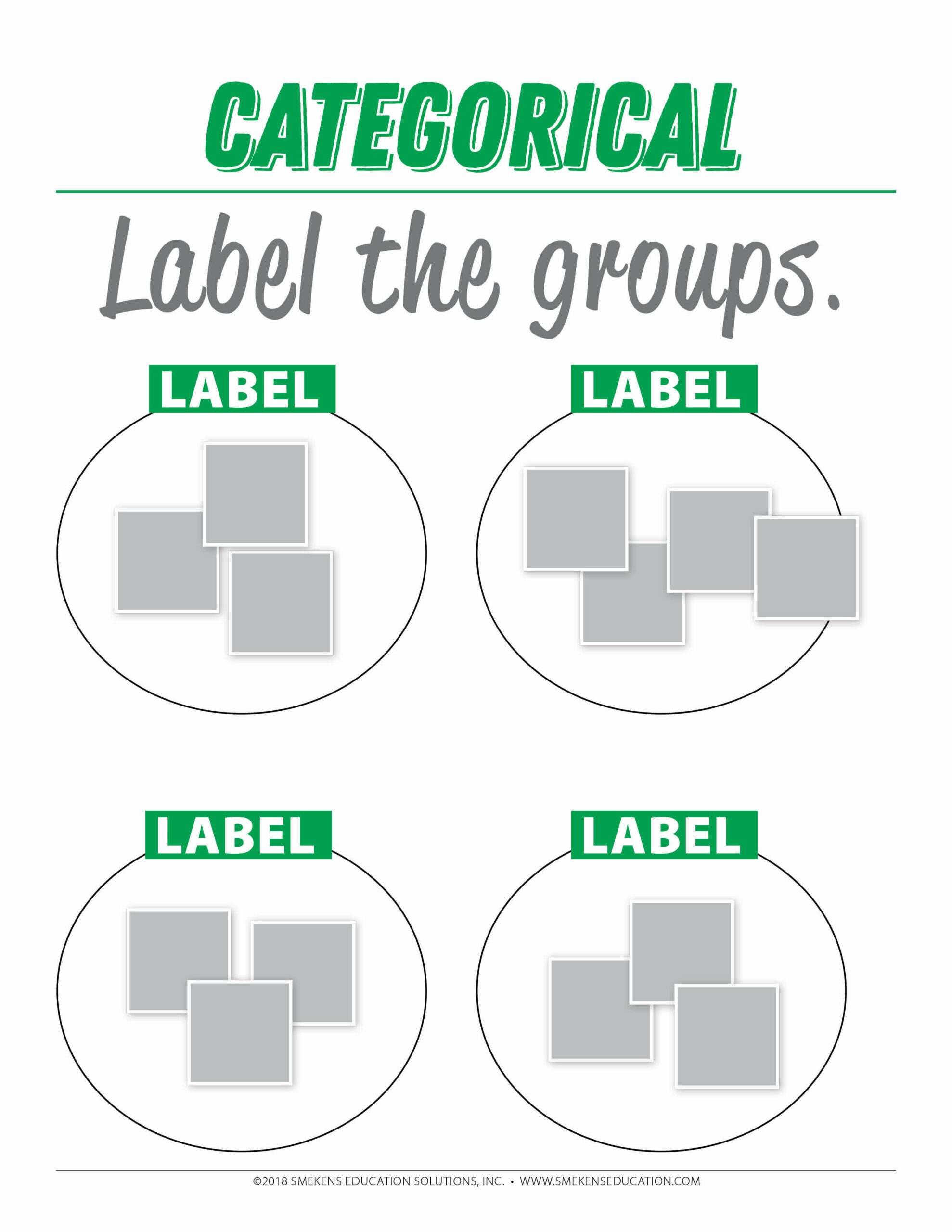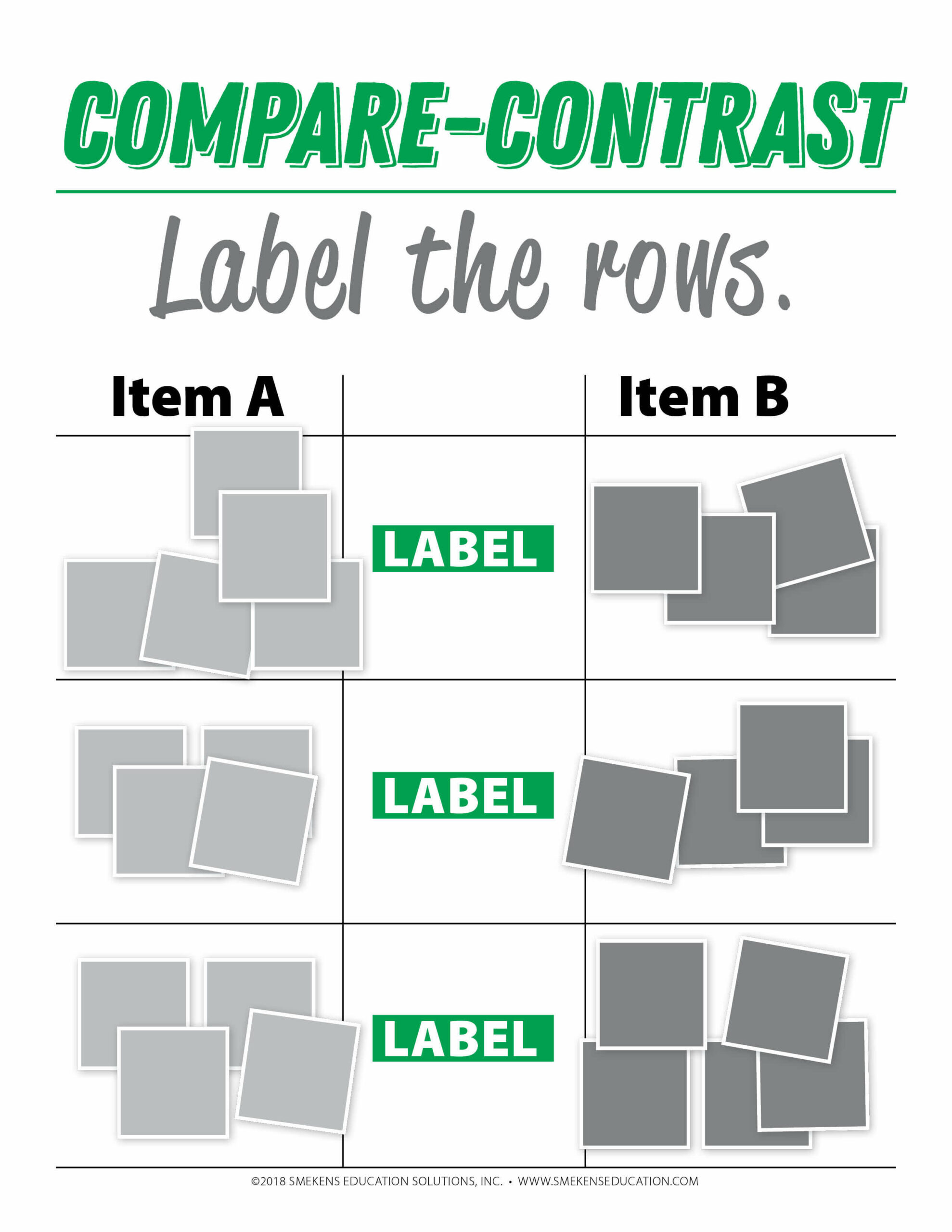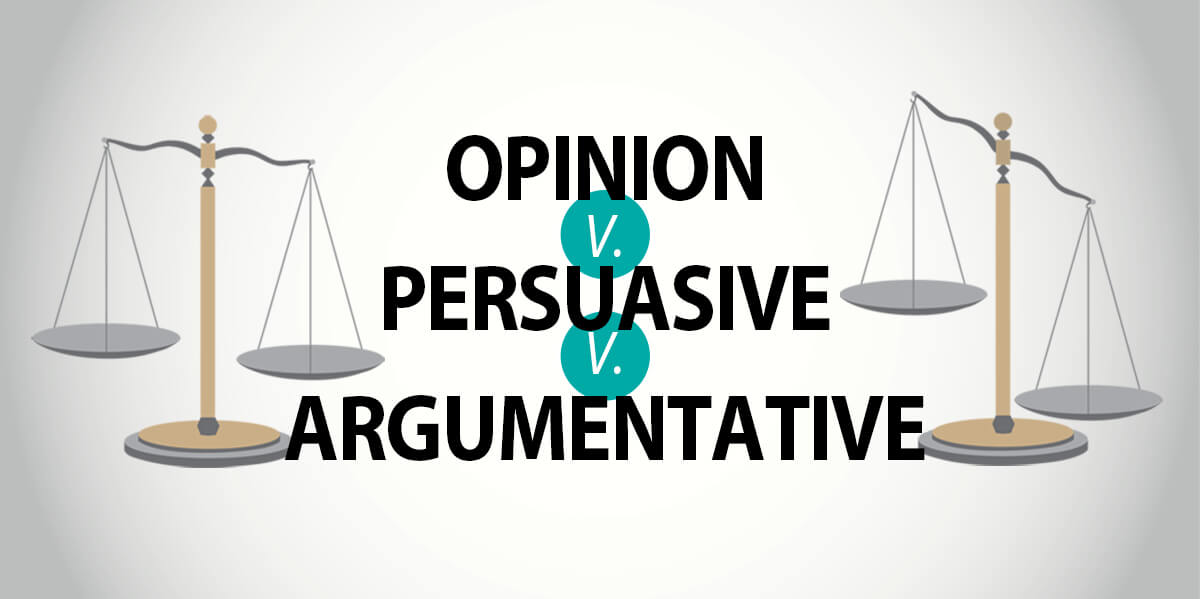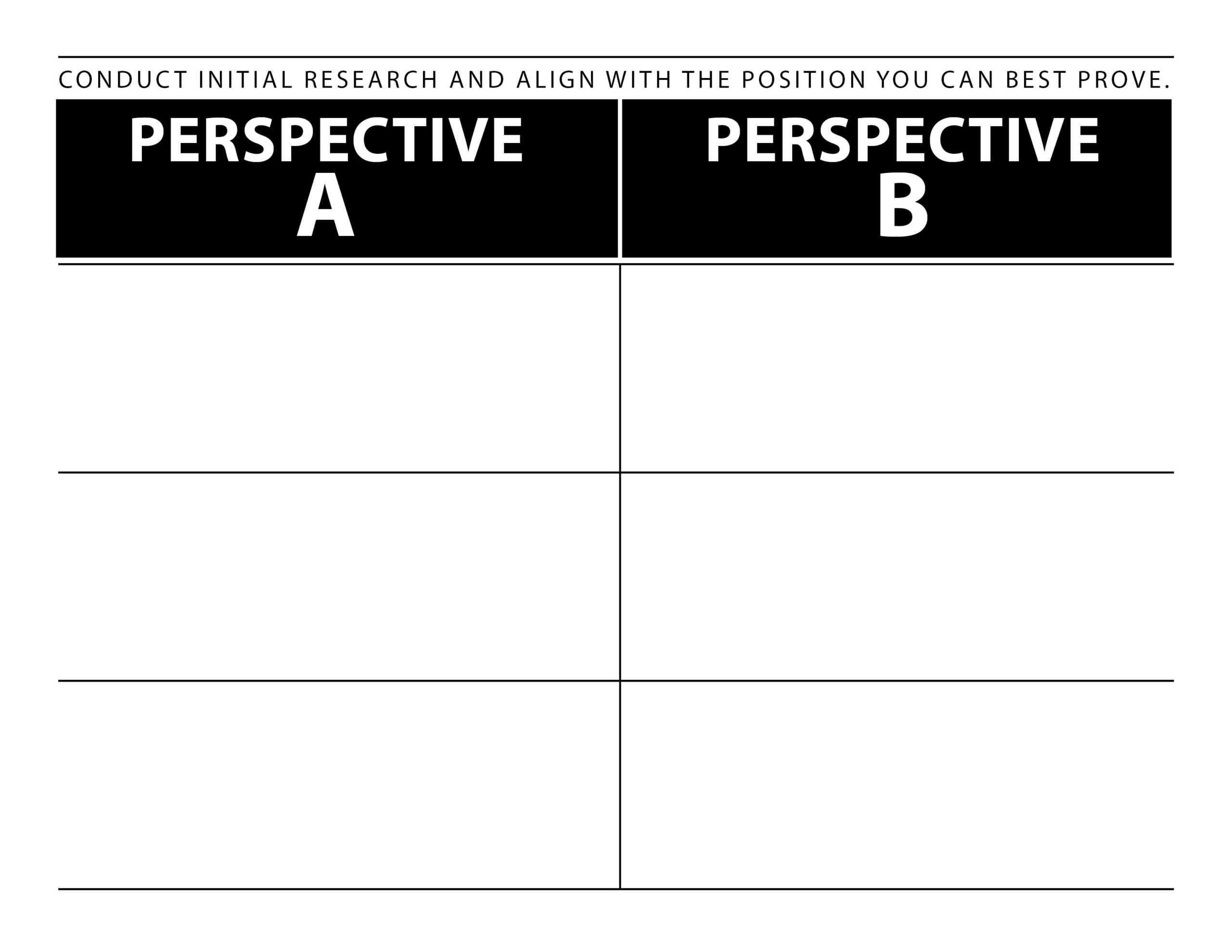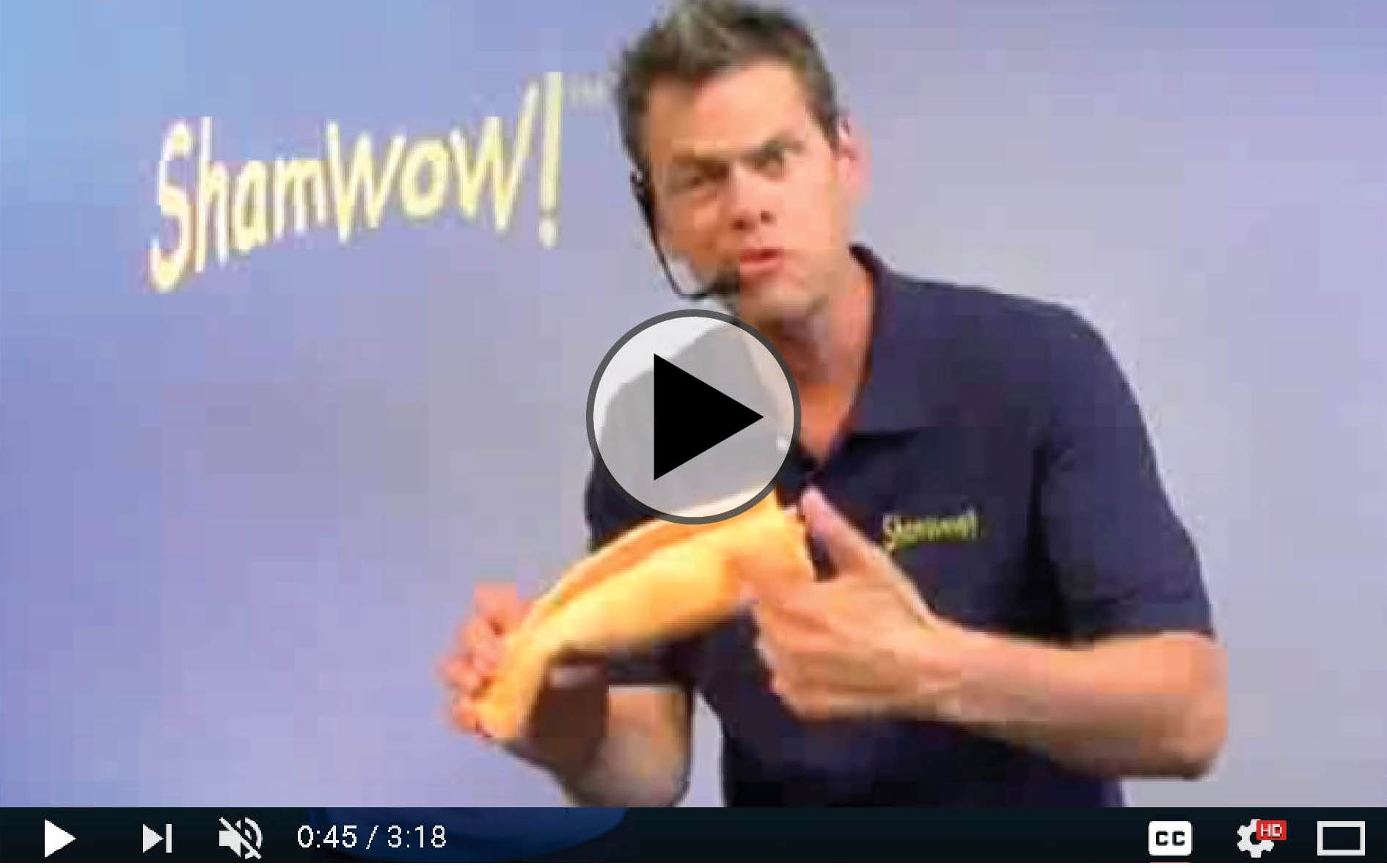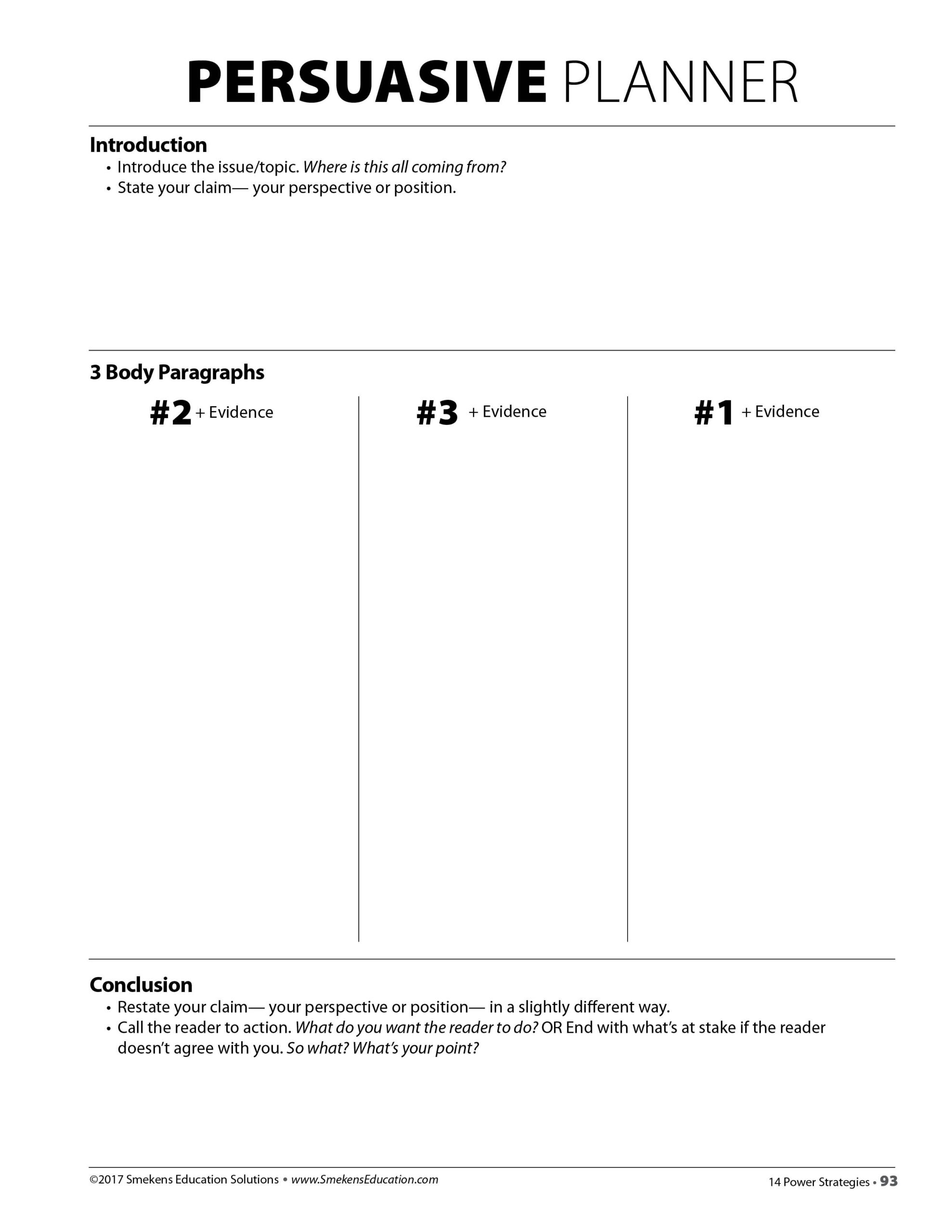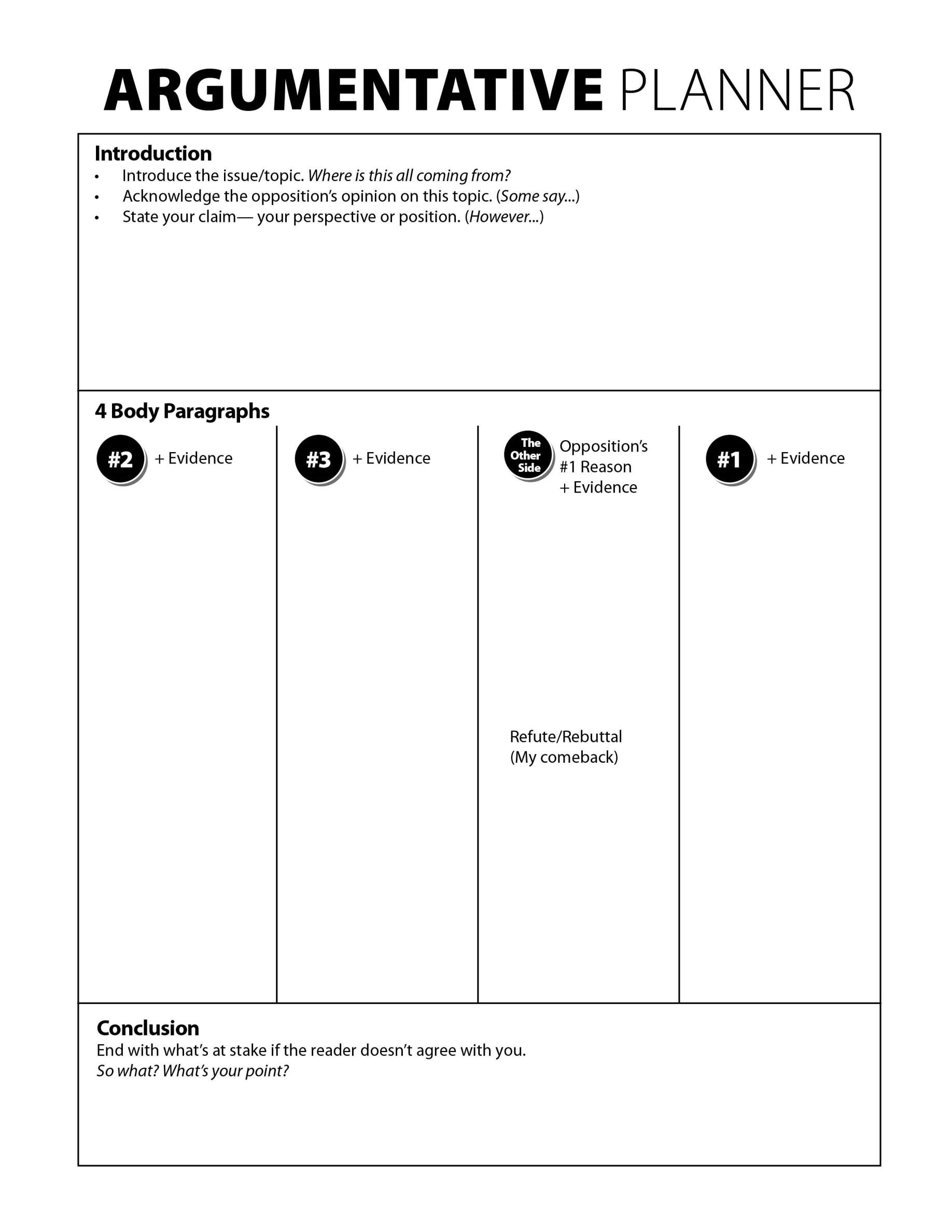14 Power Strategies
to Boost Reading & Writing Achievement on Standardized Tests
SECRET SITE
Synthesize ideas within extended responses
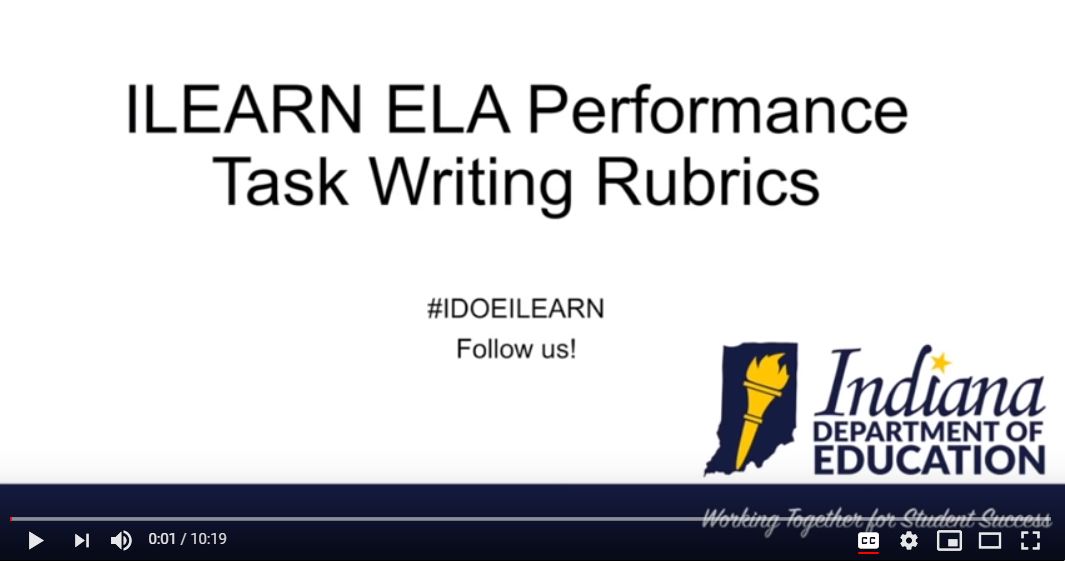
Achievethecore.com offers dozens of authentic text excerpts with text-dependent questions and extended-response prompts for free. Each is labeled by grade-level appropriateness and also comes with suggested lesson plans.
12. Respond to a narrative task
Demonstrate comprehension in a written story
Expose students to four types of narrative-writing tasks that are all rooted in reading.
Comprehend the original story
Continue the story following a similar plot.
Continue the story
Rewrite the story from a different perspective
Rewrite the POV | Example
Fractured Fairy Tales for Rewrite from a different point of view
Insert a missing part or page
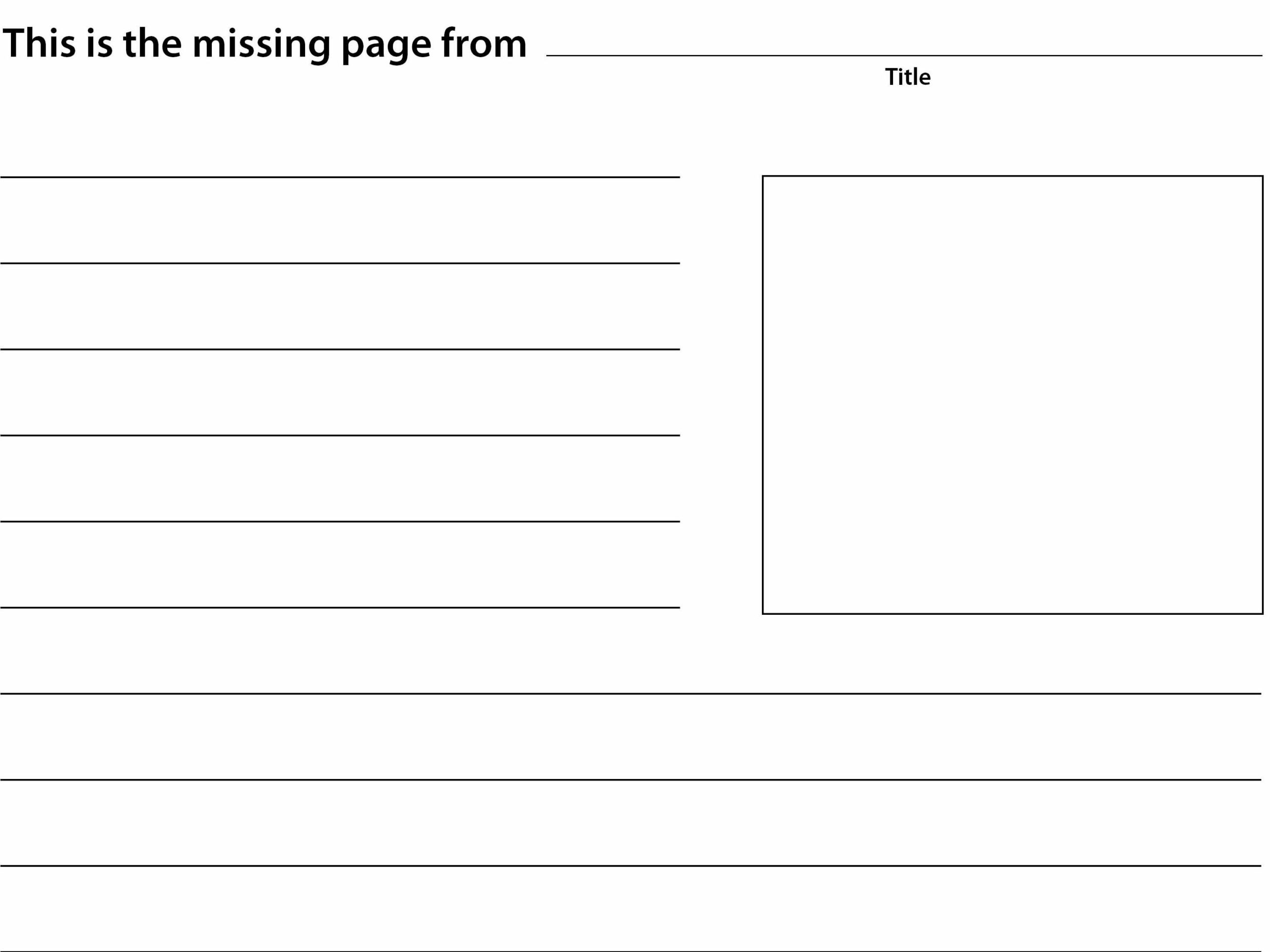
Insert the missing page | Primary Template
Insert the missing part | Example
Write fiction based on fact
Excerpt | Read & Succeed Levels 1-6
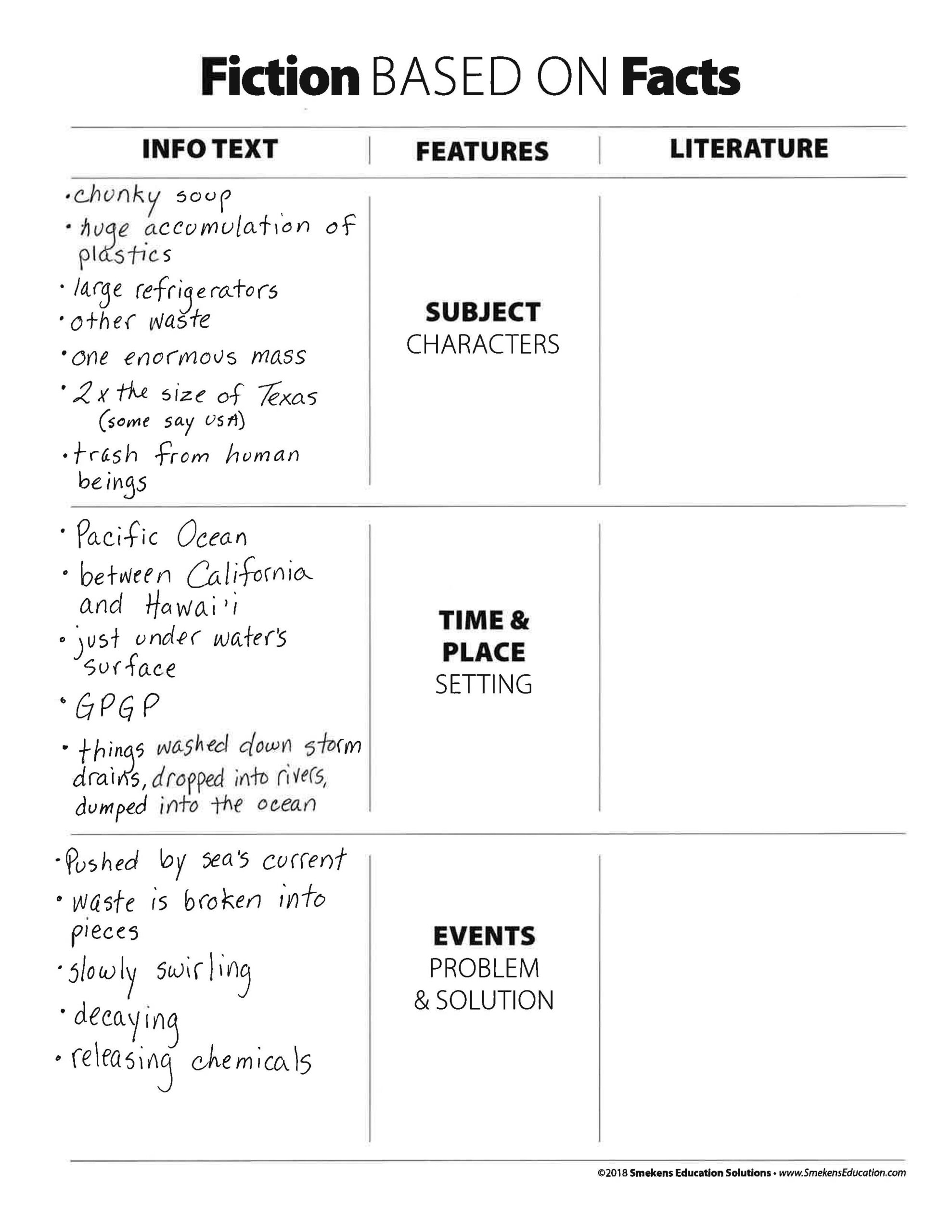
Garbage-Patch Facts Collected | Template
Fiction based on Fact | Example
13. Respond to a literary analysis task
Analyze to inform or argue an idea
These extended responses often require students to analyze why or how the author did what he did.
14. Respond to a research task
Supersize Yes, MA’AM to craft an extended response
The Yes, MA’AM strategy can be adapted to fit the requirements of an extended reading response.
Craft the introduction
Rework a prompt to serve as the introductory paragraph in an extended-reading response.
This Teaching Channel video introduces the parts of an essay, including how to rework the prompt to serve as the introduction.
Infer multiple reasons or main ideas
Teach students how to collect, cut, group, and rank details. Download a list of statements for/pro and against/con genetic engineering.
Observe a 30-minute lesson and activity executed in a Concord Junior High science class.

Introduce each organization type with a series of 3 mini-posters
Utilize the Organize It Table Tent to select the appropriate order of information. Simple assembly.
Sort information per viewpoint
Collect details for all perspectives
Identify details, facts, pros/cons, strengths/weaknesses, etc. for all sides.

